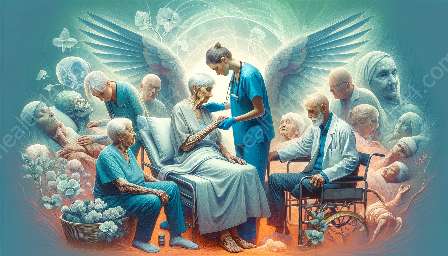As technology continues to advance, integrating gerontechnology into existing healthcare systems and infrastructure has become a crucial consideration. This article will explore the essential factors and considerations in geriatrics, aging in place, and the integration of gerontechnology.
The Role of Gerontechnology
Gerontechnology refers to the use of technology to address the needs and challenges faced by the aging population. It encompasses a wide range of devices, systems, and software designed to support older adults in leading healthier, more independent lives. The integration of gerontechnology into healthcare systems is essential in providing comprehensive and specialized care for the elderly.
Considerations for Integration
Integrating gerontechnology into existing healthcare systems and infrastructure involves several crucial considerations:
- Adaptability: Gerontechnology solutions should be adaptable to the diverse needs of the aging population, including physical and cognitive limitations.
- Interoperability: Seamless integration with existing healthcare systems is vital to ensure the efficient exchange of data and information.
- Accessibility: The usability and accessibility of gerontechnology devices and applications should be prioritized to cater to the specific needs of older adults.
- Security: Data privacy and security measures are paramount in protecting the sensitive health information of elderly patients.
- Training and Support: Adequate training and support for healthcare professionals and older adults are essential to maximize the benefits of gerontechnology.
Enhancing Aging in Place
Gerontechnology plays a significant role in facilitating aging in place, allowing older adults to live independently in their own homes while receiving the necessary support and care. By integrating technology solutions such as remote monitoring, telehealth, and home automation, healthcare providers can effectively extend their reach and ensure the well-being of seniors living at home.
Collaboration with Geriatrics
Collaborating with geriatric specialists and healthcare professionals is crucial in integrating gerontechnology into existing healthcare systems. Geriatrics focuses on the unique healthcare needs of older adults, including the management of chronic conditions, cognitive health, and end-of-life care. By working closely with geriatric experts, the integration of technology can be tailored to address the specific health challenges faced by the aging population.
Infrastructure and Technological Support
Investing in the infrastructure and technological support required for the seamless integration of gerontechnology is vital. This includes the development of interoperable platforms, robust data management systems, and secure communication channels to ensure the efficient delivery of care and services to older adults.
Conclusion
Integrating gerontechnology into existing healthcare systems and infrastructure requires a comprehensive approach that encompasses adaptability, interoperability, accessibility, security, and collaboration with geriatrics. By prioritizing the unique needs of the aging population and enhancing aging in place, the integration of gerontechnology can significantly improve the quality of care and support provided to older adults.


